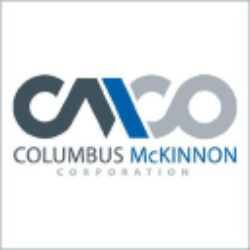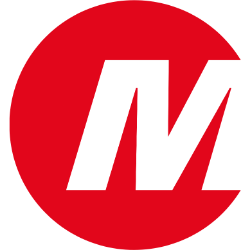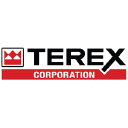LNN

Lindsay Corporation
LNN
(4.0)118,36 USD
11.22% ROA
13.87% ROE
18.28x PER
1.316.238.351,00 USD
24.78% DER
1.17% Yield
10.91% NPM
Lindsay Corporation Stock Analysis
Lindsay Corporation Fundamental Analysis
Fundamental analysis in stock investing is like studying the foundation of a house before buying it. It involves looking at a company's financial health, like its earnings, assets, and debts, to determine if it's a good investment based on its fundamental strength and potential for growth.
| # | Analysis | Rating |
|---|---|---|
| 1 |
ROE
The stock's ROE exceeds expectations (16.84%), revealing strong profitability and efficient use of shareholders' equity, making it an attractive investment opportunity. |
|
| 2 |
ROA
This stock has a great ability to make a lot of money from the things it owns, which makes it a really good investment for smart investors. |
|
| 3 |
DER
The stock has a low debt to equity ratio (30%), which means it has a small amount of debt compared to the ownership it holds |
|
| 4 |
Net Profit Growth
Throughout the past five years, this company has consistently experienced net profit growth, indicating a strong financial performance and making it an attractive investment prospect. |
|
| 5 |
Assets Growth
With a track record of consistent revenue growth in the past five years, this company presents a compelling opportunity. |
|
| 6 |
Dividend Growth
The company's dividend growth has exhibited a remarkable upward trend over the past five years, consistently delivering higher returns to investors. |
|
| 7 |
Dividend
Shareholders can rely on the company's remarkable dividend history, consistently paying dividends for the past five years, demonstrating a steadfast dedication to rewarding investors. |
|
| 8 |
Revenue Growth
With a track record of continuous revenue growth in the last three years, this company offers a promising investment opportunity |
|
| 9 |
Buffet Intrinsic Value
The company's stock presents an enticing opportunity as it appears undervalued (6.374) by Warren Buffett's formula, indicating that its intrinsic value exceeds the market price. |
|
| 10 |
PBV
The stock's high Price-to-Book Value (P/BV) ratio (3.07x) suggests it's overvalued, potentially making it an expensive investment. |
|
| 11 |
Graham Number
The company's Graham number indicates that it is overvalued compared to its stock price, suggesting a potentially unfavorable investment opportunity. |
Lindsay Corporation Technical Analysis
Technical analysis in stock investing is like reading the patterns on a weather map to predict future weather conditions. It involves studying past stock price movements and trading volumes to make predictions about where a stock's price might go next, without necessarily looking at the company's financial health.
| # | Analysis | Recommendation |
|---|---|---|
| 1 | Awesome Oscillator | Hold |
| 2 | MACD | Sell |
| 3 | RSI | Hold |
| 4 | Stoch RSI | Sell |
Lindsay Corporation Price Chart
Financial Statements
Financial statements are like report cards for companies. They show how much money a company makes (income statement), what it owns and owes (balance sheet), and where it spends its money (cash flow statement), helping stock investors understand if a company is healthy and worth investing in.
Income Statements
An income statement for a company is like a scoreboard for its profits and losses. It shows how much money the company made (revenue) and how much it spent to make that money (expenses), helping stock investors see if a company is making a profit or not.
Revenue in stock investing is the total amount of money a company earns from its sales, and it's a key factor that investors consider to assess a company's financial performance and growth potential.
| Year | Revenue | Growth |
|---|---|---|
| 1987 | 54.100.000 | |
| 1988 | 76.100.000 | 28.91% |
| 1989 | 92.600.000 | 17.82% |
| 1990 | 102.700.000 | 9.83% |
| 1991 | 98.700.000 | -4.05% |
| 1992 | 108.900.000 | 9.37% |
| 1993 | 102.100.000 | -6.66% |
| 1994 | 112.700.000 | 9.41% |
| 1995 | 111.800.000 | -0.81% |
| 1996 | 136.200.000 | 17.91% |
| 1997 | 158.300.000 | 13.96% |
| 1998 | 155.700.000 | -1.67% |
| 1999 | 116.700.000 | -33.42% |
| 2000 | 129.785.000 | 10.08% |
| 2001 | 126.669.000 | -2.46% |
| 2002 | 145.890.000 | 13.17% |
| 2003 | 163.374.000 | 10.7% |
| 2004 | 196.696.000 | 16.94% |
| 2005 | 177.271.000 | -10.96% |
| 2006 | 226.001.000 | 21.56% |
| 2007 | 281.857.000 | 19.82% |
| 2008 | 475.087.000 | 40.67% |
| 2009 | 336.228.000 | -41.3% |
| 2010 | 358.440.000 | 6.2% |
| 2011 | 478.890.000 | 25.15% |
| 2012 | 551.255.000 | 13.13% |
| 2013 | 690.848.000 | 20.21% |
| 2014 | 617.933.000 | -11.8% |
| 2015 | 560.181.000 | -10.31% |
| 2016 | 516.411.000 | -8.48% |
| 2017 | 517.985.000 | 0.3% |
| 2018 | 547.705.000 | 5.43% |
| 2019 | 444.072.000 | -23.34% |
| 2020 | 474.692.000 | 6.45% |
| 2021 | 567.646.000 | 16.38% |
| 2022 | 770.743.000 | 26.35% |
| 2023 | 674.084.000 | -14.34% |
| 2024 | 556.796.000 | -21.06% |
| 2024 | 607.074.000 | 8.28% |
Research and Development Expenses are the costs a company incurs to create and improve its products or services, which can be important for investors to evaluate a company's innovation and potential for future growth.
| Year | Research and Development Expenses | Growth |
|---|---|---|
| 1987 | 0 | |
| 1988 | 0 | 0% |
| 1989 | 0 | 0% |
| 1990 | 0 | 0% |
| 1991 | 0 | 0% |
| 1992 | 0 | 0% |
| 1993 | 0 | 0% |
| 1994 | 1.200.000 | 100% |
| 1995 | 1.400.000 | 14.29% |
| 1996 | 1.400.000 | 0% |
| 1997 | 1.600.000 | 12.5% |
| 1998 | 1.800.000 | 11.11% |
| 1999 | 1.900.000 | 5.26% |
| 2000 | 2.064.000 | 7.95% |
| 2001 | 2.301.000 | 10.3% |
| 2002 | 2.377.000 | 3.2% |
| 2003 | 2.578.000 | 7.8% |
| 2004 | 2.910.000 | 11.41% |
| 2005 | 2.665.000 | -9.19% |
| 2006 | 2.741.000 | 2.77% |
| 2007 | 4.680.000 | 41.43% |
| 2008 | 6.406.000 | 26.94% |
| 2009 | 6.037.000 | -6.11% |
| 2010 | 7.792.000 | 22.52% |
| 2011 | 10.403.000 | 25.1% |
| 2012 | 9.481.000 | -9.72% |
| 2013 | 11.395.000 | 16.8% |
| 2014 | 11.125.000 | -2.43% |
| 2015 | 12.849.000 | 13.42% |
| 2016 | 15.846.000 | 18.91% |
| 2017 | 17.147.000 | 7.59% |
| 2018 | 16.052.000 | -6.82% |
| 2019 | 13.936.000 | -15.18% |
| 2020 | 13.950.000 | 0.1% |
| 2021 | 13.359.000 | -4.42% |
| 2022 | 15.145.000 | 11.79% |
| 2023 | 18.218.000 | 16.87% |
| 2024 | 17.148.000 | -6.24% |
| 2024 | 17.123.000 | -0.15% |
General and Administrative Expenses are the costs a company incurs to run its day-to-day operations, such as office rent, salaries, and utilities, which investors consider to understand a company's overall efficiency and management effectiveness.
| Year | General and Administrative Expenses | Growth |
|---|---|---|
| 1987 | 0 | |
| 1988 | 0 | 0% |
| 1989 | 0 | 0% |
| 1990 | 0 | 0% |
| 1991 | 0 | 0% |
| 1992 | 0 | 0% |
| 1993 | 0 | 0% |
| 1994 | 0 | 0% |
| 1995 | 10.600.000 | 100% |
| 1996 | 11.900.000 | 10.92% |
| 1997 | 12.900.000 | 7.75% |
| 1998 | 13.900.000 | 7.19% |
| 1999 | 13.700.000 | -1.46% |
| 2000 | 13.106.000 | -4.53% |
| 2001 | 15.085.000 | 13.12% |
| 2002 | 17.434.000 | 13.47% |
| 2003 | 20.802.000 | 16.19% |
| 2004 | 24.567.000 | 15.33% |
| 2005 | 25.408.000 | 3.31% |
| 2006 | 29.998.000 | 15.3% |
| 2007 | 41.293.000 | 27.35% |
| 2008 | 55.187.000 | 25.18% |
| 2009 | 29.816.000 | -85.09% |
| 2010 | 30.196.000 | 1.26% |
| 2011 | 34.954.000 | 13.61% |
| 2012 | 45.423.000 | 23.05% |
| 2013 | 43.441.000 | -4.56% |
| 2014 | 43.228.000 | -0.49% |
| 2015 | 52.261.000 | 17.28% |
| 2016 | 56.419.000 | 7.37% |
| 2017 | 46.959.000 | -20.15% |
| 2018 | 55.962.000 | 16.09% |
| 2019 | 63.737.000 | 12.2% |
| 2020 | 52.947.000 | -20.38% |
| 2021 | 51.923.000 | -1.97% |
| 2022 | 55.470.000 | 6.39% |
| 2023 | 56.412.000 | 1.67% |
| 2024 | 50.780.000 | -11.09% |
| 2024 | 57.419.000 | 11.56% |
EBITDA stands for Earnings Before Interest, Taxes, Depreciation, and Amortization. It is a measure that helps stock investors analyze a company's profitability by looking at its earnings without considering certain expenses. This helps to get a clearer picture of the company's financial performance and its ability to generate cash flow.
| Year | EBITDA | Growth |
|---|---|---|
| 1987 | 3.500.000 | |
| 1988 | 5.800.000 | 39.66% |
| 1989 | 11.300.000 | 48.67% |
| 1990 | 11.300.000 | 0% |
| 1991 | 11.900.000 | 5.04% |
| 1992 | 13.900.000 | 14.39% |
| 1993 | 14.300.000 | 2.8% |
| 1994 | 15.700.000 | 8.92% |
| 1995 | 15.400.000 | -1.95% |
| 1996 | 21.100.000 | 27.01% |
| 1997 | 28.600.000 | 26.22% |
| 1998 | 29.600.000 | 3.38% |
| 1999 | 17.900.000 | -65.36% |
| 2000 | 19.357.000 | 7.53% |
| 2001 | 13.592.000 | -42.41% |
| 2002 | 16.306.000 | 16.64% |
| 2003 | 19.746.000 | 17.42% |
| 2004 | 15.158.000 | -30.27% |
| 2005 | 9.227.000 | -64.28% |
| 2006 | 15.502.000 | 40.48% |
| 2007 | 23.759.000 | 34.75% |
| 2008 | 73.399.000 | 67.63% |
| 2009 | 31.691.000 | -131.61% |
| 2010 | 47.492.000 | 33.27% |
| 2011 | 68.453.000 | 30.62% |
| 2012 | 78.068.000 | 12.32% |
| 2013 | 120.211.000 | 35.06% |
| 2014 | 93.635.000 | -28.38% |
| 2015 | 65.789.000 | -42.33% |
| 2016 | 50.920.000 | -29.2% |
| 2017 | 57.150.000 | 10.9% |
| 2018 | 55.526.000 | -2.92% |
| 2019 | 20.892.000 | -165.78% |
| 2020 | 72.998.000 | 71.38% |
| 2021 | 74.314.000 | 1.77% |
| 2022 | 107.637.000 | 30.96% |
| 2023 | 120.063.000 | 10.35% |
| 2024 | 100.836.000 | -19.07% |
| 2024 | 103.484.000 | 2.56% |
Gross profit is the money a company makes from selling its products or services after subtracting the cost of producing or providing them, and it is an important measure for investors to understand a company's profitability.
| Year | Gross Profit | Growth |
|---|---|---|
| 1987 | 10.200.000 | |
| 1988 | 12.800.000 | 20.31% |
| 1989 | 19.500.000 | 34.36% |
| 1990 | 20.900.000 | 6.7% |
| 1991 | 22.400.000 | 6.7% |
| 1992 | 24.800.000 | 9.68% |
| 1993 | 25.000.000 | 0.8% |
| 1994 | 27.300.000 | 8.42% |
| 1995 | 27.400.000 | 0.36% |
| 1996 | 34.500.000 | 20.58% |
| 1997 | 43.100.000 | 19.95% |
| 1998 | 45.300.000 | 4.86% |
| 1999 | 33.500.000 | -35.22% |
| 2000 | 34.527.000 | 2.97% |
| 2001 | 27.930.000 | -23.62% |
| 2002 | 32.927.000 | 15.18% |
| 2003 | 39.746.000 | 17.16% |
| 2004 | 39.517.000 | -0.58% |
| 2005 | 33.571.000 | -17.71% |
| 2006 | 48.241.000 | 30.41% |
| 2007 | 69.732.000 | 30.82% |
| 2008 | 123.832.000 | 43.69% |
| 2009 | 80.631.000 | -53.58% |
| 2010 | 98.900.000 | 18.47% |
| 2011 | 129.785.000 | 23.8% |
| 2012 | 148.518.000 | 12.61% |
| 2013 | 194.834.000 | 23.77% |
| 2014 | 170.995.000 | -13.94% |
| 2015 | 156.321.000 | -9.39% |
| 2016 | 148.613.000 | -5.19% |
| 2017 | 145.012.000 | -2.48% |
| 2018 | 151.462.000 | 4.26% |
| 2019 | 114.608.000 | -32.16% |
| 2020 | 152.543.000 | 24.87% |
| 2021 | 150.205.000 | -1.56% |
| 2022 | 199.178.000 | 24.59% |
| 2023 | 213.015.000 | 6.5% |
| 2024 | 185.988.000 | -14.53% |
| 2024 | 191.055.000 | 2.65% |
Net income in stock investing is like the money a company actually gets to keep as profit after paying all its bills, and it's an important measure to understand how well a company is doing financially.
| Year | Net Profit | Growth |
|---|---|---|
| 1987 | 1.600.000 | |
| 1988 | 3.800.000 | 57.89% |
| 1989 | 7.400.000 | 48.65% |
| 1990 | 8.400.000 | 11.9% |
| 1991 | 8.900.000 | 5.62% |
| 1992 | 11.000.000 | 19.09% |
| 1993 | 10.700.000 | -2.8% |
| 1994 | 11.900.000 | 10.08% |
| 1995 | 11.700.000 | -1.71% |
| 1996 | 16.500.000 | 29.09% |
| 1997 | 20.100.000 | 17.91% |
| 1998 | 23.500.000 | 14.47% |
| 1999 | 12.700.000 | -85.04% |
| 2000 | 13.208.000 | 3.85% |
| 2001 | 7.961.000 | -65.91% |
| 2002 | 10.664.000 | 25.35% |
| 2003 | 12.887.000 | 17.25% |
| 2004 | 9.286.000 | -38.78% |
| 2005 | 4.838.000 | -91.94% |
| 2006 | 11.700.000 | 58.65% |
| 2007 | 15.620.000 | 25.1% |
| 2008 | 39.405.000 | 60.36% |
| 2009 | 13.823.000 | -185.07% |
| 2010 | 24.862.000 | 44.4% |
| 2011 | 36.802.000 | 32.44% |
| 2012 | 43.277.000 | 14.96% |
| 2013 | 70.570.000 | 38.68% |
| 2014 | 51.512.000 | -37% |
| 2015 | 26.309.000 | -95.8% |
| 2016 | 20.267.000 | -29.81% |
| 2017 | 23.179.000 | 12.56% |
| 2018 | 20.277.000 | -14.31% |
| 2019 | 2.172.000 | -833.56% |
| 2020 | 38.629.000 | 94.38% |
| 2021 | 42.572.000 | 9.26% |
| 2022 | 65.469.000 | 34.97% |
| 2023 | 72.379.000 | 9.55% |
| 2024 | 81.516.000 | 11.21% |
| 2024 | 66.257.000 | -23.03% |
EPS, or earnings per share, is a measure that shows how much profit a company has earned for each outstanding share of its stock, and it is important for stock investors as it helps understand the profitability of a company and compare it with other companies in the market.
| Year | Earning per Share (EPS) | Growth |
|---|---|---|
| 1987 | 0 | |
| 1988 | 0 | 0% |
| 1989 | 0 | 0% |
| 1990 | 0 | 0% |
| 1991 | 0 | 0% |
| 1992 | 0 | 0% |
| 1993 | 0 | 0% |
| 1994 | 0 | 0% |
| 1995 | 1 | 0% |
| 1996 | 1 | 0% |
| 1997 | 1 | 100% |
| 1998 | 2 | 0% |
| 1999 | 1 | 0% |
| 2000 | 1 | 100% |
| 2001 | 1 | 0% |
| 2002 | 1 | 0% |
| 2003 | 1 | 100% |
| 2004 | 1 | 0% |
| 2005 | 0 | 0% |
| 2006 | 1 | 100% |
| 2007 | 1 | 0% |
| 2008 | 3 | 66.67% |
| 2009 | 1 | -200% |
| 2010 | 2 | 50% |
| 2011 | 3 | 0% |
| 2012 | 3 | 33.33% |
| 2013 | 6 | 40% |
| 2014 | 4 | -25% |
| 2015 | 2 | -100% |
| 2016 | 2 | -100% |
| 2017 | 2 | 50% |
| 2018 | 2 | -100% |
| 2019 | 0 | 0% |
| 2020 | 4 | 100% |
| 2021 | 4 | 0% |
| 2022 | 6 | 40% |
| 2023 | 7 | 16.67% |
| 2024 | 7 | 14.29% |
| 2024 | 6 | -16.67% |
Cashflow Statements
Cashflow statements show the movement of money in and out of a company, helping stock investors understand how much money a company makes and spends. By examining cashflow statements, investors can assess if a company is generating enough cash to pay its bills, invest in growth, and provide returns to stockholders.
Free cash flow is the leftover cash that a company generates after covering its operating expenses and capital expenditures, which is important for stock investors as it shows how much money a company has available to invest in growth, pay dividends, or reduce debt.
| Year | Free Cashflow | Growth |
|---|---|---|
| 1990 | 7.900.000 | |
| 1991 | 13.900.000 | 43.17% |
| 1992 | 12.900.000 | -7.75% |
| 1993 | 1.900.000 | -578.95% |
| 1994 | 8.700.000 | 78.16% |
| 1995 | 9.700.000 | 10.31% |
| 1996 | 5.800.000 | -67.24% |
| 1997 | 18.000.000 | 67.78% |
| 1998 | 23.900.000 | 24.69% |
| 1999 | 15.600.000 | -53.21% |
| 2000 | 4.598.000 | -239.28% |
| 2001 | 7.108.000 | 35.31% |
| 2002 | 9.346.000 | 23.95% |
| 2003 | 13.389.000 | 30.2% |
| 2004 | -3.832.000 | 449.4% |
| 2005 | 7.656.000 | 150.05% |
| 2006 | 10.804.000 | 29.14% |
| 2007 | -4.523.000 | 338.87% |
| 2008 | 16.420.000 | 127.55% |
| 2009 | 46.995.000 | 65.06% |
| 2010 | 19.458.000 | -141.52% |
| 2011 | 34.650.000 | 43.84% |
| 2012 | 42.549.000 | 18.56% |
| 2013 | 46.369.000 | 8.24% |
| 2014 | 74.083.000 | 37.41% |
| 2015 | 33.438.000 | -121.55% |
| 2016 | 21.576.000 | -54.98% |
| 2017 | 30.586.000 | 29.46% |
| 2018 | 22.880.000 | -33.68% |
| 2019 | -19.414.000 | 217.85% |
| 2020 | 24.589.000 | 178.95% |
| 2021 | 17.457.000 | -40.85% |
| 2022 | -12.547.000 | 239.13% |
| 2023 | 100.932.000 | 112.43% |
| 2024 | 25.760.000 | -291.82% |
Operating cash flow represents the cash generated or consumed by a company's day-to-day operations, excluding external investing or financing activities, and is crucial for stock investors as it shows how much cash a company is generating from its core business operations.
| Year | Operating Cashflow | Growth |
|---|---|---|
| 1990 | 9.100.000 | |
| 1991 | 15.600.000 | 41.67% |
| 1992 | 14.600.000 | -6.85% |
| 1993 | 2.800.000 | -421.43% |
| 1994 | 10.000.000 | 72% |
| 1995 | 12.500.000 | 20% |
| 1996 | 9.800.000 | -27.55% |
| 1997 | 21.300.000 | 53.99% |
| 1998 | 29.000.000 | 26.55% |
| 1999 | 19.600.000 | -47.96% |
| 2000 | 8.062.000 | -143.12% |
| 2001 | 10.037.000 | 19.68% |
| 2002 | 11.563.000 | 13.2% |
| 2003 | 15.307.000 | 24.46% |
| 2004 | 1.205.000 | -1170.29% |
| 2005 | 11.778.000 | 89.77% |
| 2006 | 14.396.000 | 18.19% |
| 2007 | 10.124.000 | -42.2% |
| 2008 | 30.513.000 | 66.82% |
| 2009 | 57.495.000 | 46.93% |
| 2010 | 25.242.000 | -127.78% |
| 2011 | 43.055.000 | 41.37% |
| 2012 | 52.439.000 | 17.9% |
| 2013 | 57.505.000 | 8.81% |
| 2014 | 91.798.000 | 37.36% |
| 2015 | 48.682.000 | -88.57% |
| 2016 | 33.072.000 | -47.2% |
| 2017 | 39.449.000 | 16.17% |
| 2018 | 33.934.000 | -16.25% |
| 2019 | 3.797.000 | -793.71% |
| 2020 | 46.034.000 | 91.75% |
| 2021 | 43.968.000 | -4.7% |
| 2022 | 3.048.000 | -1342.52% |
| 2023 | 119.707.000 | 97.45% |
| 2024 | 30.514.000 | -292.3% |
Capex, short for capital expenditures, refers to the money a company spends on acquiring or upgrading tangible assets like buildings, equipment, or technology, which is important for stock investors as it indicates how much a company is investing in its infrastructure to support future growth and profitability.
| Year | Capital Expenditure | Growth |
|---|---|---|
| 1990 | 1.200.000 | |
| 1991 | 1.700.000 | 29.41% |
| 1992 | 1.700.000 | 0% |
| 1993 | 900.000 | -88.89% |
| 1994 | 1.300.000 | 30.77% |
| 1995 | 2.800.000 | 53.57% |
| 1996 | 4.000.000 | 30% |
| 1997 | 3.300.000 | -21.21% |
| 1998 | 5.100.000 | 35.29% |
| 1999 | 4.000.000 | -27.5% |
| 2000 | 3.464.000 | -15.47% |
| 2001 | 2.929.000 | -18.27% |
| 2002 | 2.217.000 | -32.12% |
| 2003 | 1.918.000 | -15.59% |
| 2004 | 5.037.000 | 61.92% |
| 2005 | 4.122.000 | -22.2% |
| 2006 | 3.592.000 | -14.76% |
| 2007 | 14.647.000 | 75.48% |
| 2008 | 14.093.000 | -3.93% |
| 2009 | 10.500.000 | -34.22% |
| 2010 | 5.784.000 | -81.54% |
| 2011 | 8.405.000 | 31.18% |
| 2012 | 9.890.000 | 15.02% |
| 2013 | 11.136.000 | 11.19% |
| 2014 | 17.715.000 | 37.14% |
| 2015 | 15.244.000 | -16.21% |
| 2016 | 11.496.000 | -32.6% |
| 2017 | 8.863.000 | -29.71% |
| 2018 | 11.054.000 | 19.82% |
| 2019 | 23.211.000 | 52.38% |
| 2020 | 21.445.000 | -8.24% |
| 2021 | 26.511.000 | 19.11% |
| 2022 | 15.595.000 | -70% |
| 2023 | 18.775.000 | 16.94% |
| 2024 | 4.754.000 | -294.93% |
Balance Sheet
Balance sheets provide a snapshot of a company's financial health and its assets (such as cash, inventory, and property) and liabilities (like debts and obligations) at a specific point in time. For stock investors, balance sheets help assess the company's overall worth and evaluate its ability to meet financial obligations and support future growth.
Equity refers to the ownership interest or stake that shareholders have in a company, representing their claim on its assets and earnings after all debts and liabilities are paid.
| Year | Equity | Growth |
|---|---|---|
| 1987 | 6.800.000 | |
| 1988 | 8.000.000 | 15% |
| 1989 | 16.000.000 | 50% |
| 1990 | 24.000.000 | 33.33% |
| 1991 | 32.800.000 | 26.83% |
| 1992 | 44.400.000 | 26.13% |
| 1993 | 55.500.000 | 20% |
| 1994 | 68.100.000 | 18.5% |
| 1995 | 68.700.000 | 0.87% |
| 1996 | 76.800.000 | 10.55% |
| 1997 | 87.000.000 | 11.72% |
| 1998 | 90.900.000 | 4.29% |
| 1999 | 82.700.000 | -9.92% |
| 2000 | 77.432.000 | -6.8% |
| 2001 | 81.416.000 | 4.89% |
| 2002 | 90.664.000 | 10.2% |
| 2003 | 104.291.000 | 13.07% |
| 2004 | 112.184.000 | 7.04% |
| 2005 | 109.330.000 | -2.61% |
| 2006 | 120.900.000 | 9.57% |
| 2007 | 141.028.000 | 14.27% |
| 2008 | 195.901.000 | 28.01% |
| 2009 | 207.658.000 | 5.66% |
| 2010 | 229.607.000 | 9.56% |
| 2011 | 275.665.000 | 16.71% |
| 2012 | 310.838.000 | 11.32% |
| 2013 | 380.638.000 | 18.34% |
| 2014 | 382.647.000 | 0.53% |
| 2015 | 288.560.000 | -32.61% |
| 2016 | 251.567.000 | -14.71% |
| 2017 | 270.055.000 | 6.85% |
| 2018 | 276.866.000 | 2.46% |
| 2019 | 268.209.000 | -3.23% |
| 2020 | 298.518.000 | 10.15% |
| 2021 | 338.445.000 | 11.8% |
| 2022 | 393.358.000 | 13.96% |
| 2023 | 455.651.000 | 13.67% |
| 2024 | 479.996.000 | 5.07% |
Assets represent the valuable resources that a company owns, such as cash, inventory, property, and equipment, and understanding a company's assets helps investors assess its value and potential for generating future profits.
| Year | Assets | Growth |
|---|---|---|
| 1987 | 19.000.000 | |
| 1988 | 24.000.000 | 20.83% |
| 1989 | 31.700.000 | 24.29% |
| 1990 | 46.900.000 | 32.41% |
| 1991 | 60.400.000 | 22.35% |
| 1992 | 71.400.000 | 15.41% |
| 1993 | 79.900.000 | 10.64% |
| 1994 | 88.400.000 | 9.62% |
| 1995 | 86.100.000 | -2.67% |
| 1996 | 96.800.000 | 11.05% |
| 1997 | 108.000.000 | 10.37% |
| 1998 | 108.900.000 | 0.83% |
| 1999 | 100.400.000 | -8.47% |
| 2000 | 95.816.000 | -4.78% |
| 2001 | 100.256.000 | 4.43% |
| 2002 | 112.683.000 | 11.03% |
| 2003 | 131.220.000 | 14.13% |
| 2004 | 139.001.000 | 5.6% |
| 2005 | 134.839.000 | -3.09% |
| 2006 | 192.234.000 | 29.86% |
| 2007 | 242.205.000 | 20.63% |
| 2008 | 326.877.000 | 25.9% |
| 2009 | 307.897.000 | -6.16% |
| 2010 | 325.481.000 | 5.4% |
| 2011 | 381.144.000 | 14.6% |
| 2012 | 415.531.000 | 8.28% |
| 2013 | 512.296.000 | 18.89% |
| 2014 | 526.551.000 | 2.71% |
| 2015 | 536.468.000 | 1.85% |
| 2016 | 499.565.000 | -7.39% |
| 2017 | 506.032.000 | 1.28% |
| 2018 | 500.256.000 | -1.15% |
| 2019 | 500.314.000 | 0.01% |
| 2020 | 570.526.000 | 12.31% |
| 2021 | 637.185.000 | 10.46% |
| 2022 | 710.653.000 | 10.34% |
| 2023 | 745.660.000 | 4.69% |
| 2024 | 758.101.000 | 1.64% |
Liabilities refer to the financial obligations or debts that a company owes to creditors or external parties, and understanding a company's liabilities is important for investors as it helps assess the company's financial risk and ability to meet its obligations.
| Year | Liabilities | Growth |
|---|---|---|
| 1987 | 12.200.000 | |
| 1988 | 16.000.000 | 23.75% |
| 1989 | 15.700.000 | -1.91% |
| 1990 | 22.900.000 | 31.44% |
| 1991 | 27.600.000 | 17.03% |
| 1992 | 27.000.000 | -2.22% |
| 1993 | 24.400.000 | -10.66% |
| 1994 | 20.300.000 | -20.2% |
| 1995 | 17.400.000 | -16.67% |
| 1996 | 20.000.000 | 13% |
| 1997 | 21.000.000 | 4.76% |
| 1998 | 18.000.000 | -16.67% |
| 1999 | 17.700.000 | -1.69% |
| 2000 | 18.384.000 | 3.72% |
| 2001 | 18.840.000 | 2.42% |
| 2002 | 22.019.000 | 14.44% |
| 2003 | 26.929.000 | 18.23% |
| 2004 | 26.817.000 | -0.42% |
| 2005 | 25.509.000 | -5.13% |
| 2006 | 71.334.000 | 64.24% |
| 2007 | 101.177.000 | 29.5% |
| 2008 | 130.976.000 | 22.75% |
| 2009 | 100.239.000 | -30.66% |
| 2010 | 95.874.000 | -4.55% |
| 2011 | 105.479.000 | 9.11% |
| 2012 | 104.693.000 | -0.75% |
| 2013 | 131.658.000 | 20.48% |
| 2014 | 143.904.000 | 8.51% |
| 2015 | 247.908.000 | 41.95% |
| 2016 | 247.998.000 | 0.04% |
| 2017 | 235.977.000 | -5.09% |
| 2018 | 223.390.000 | -5.63% |
| 2019 | 232.105.000 | 3.75% |
| 2020 | 272.008.000 | 14.67% |
| 2021 | 298.740.000 | 8.95% |
| 2022 | 317.295.000 | 5.85% |
| 2023 | 290.009.000 | -9.41% |
| 2024 | 278.105.000 | -4.28% |
Lindsay Corporation Financial Ratio (TTM)
Valuation Metrics
- Revenue per Share
- 56.31
- Net Income per Share
- 6.62
- Price to Earning Ratio
- 18.28x
- Price To Sales Ratio
- 2.13x
- POCF Ratio
- 12.88
- PFCF Ratio
- 17.75
- Price to Book Ratio
- 2.77
- EV to Sales
- 2.12
- EV Over EBITDA
- 11.88
- EV to Operating CashFlow
- 12.71
- EV to FreeCashFlow
- 17.68
- Earnings Yield
- 0.05
- FreeCashFlow Yield
- 0.06
- Market Cap
- 1,32 Bil.
- Enterprise Value
- 1,31 Bil.
- Graham Number
- 80.61
- Graham NetNet
- 5.81
Income Statement Metrics
- Net Income per Share
- 6.62
- Income Quality
- 1.42
- ROE
- 0.15
- Return On Assets
- 0.09
- Return On Capital Employed
- 0.12
- Net Income per EBT
- 0.84
- EBT Per Ebit
- 1.03
- Ebit per Revenue
- 0.13
- Effective Tax Rate
- 0.16
Margins
- Sales, General, & Administrative to Revenue
- 0.09
- Research & Developement to Revenue
- 0.03
- Stock Based Compensation to Revenue
- 0.01
- Gross Profit Margin
- 0.31
- Operating Profit Margin
- 0.13
- Pretax Profit Margin
- 0.13
- Net Profit Margin
- 0.11
Dividends
- Dividend Yield
- 0.01
- Dividend Yield %
- 1.17
- Payout Ratio
- 0.21
- Dividend Per Share
- 1.41
Operating Metrics
- Operating Cashflow per Share
- 9.38
- Free CashFlow per Share
- 6.75
- Capex to Operating CashFlow
- 0.28
- Capex to Revenue
- 0.05
- Capex to Depreciation
- 1.4
- Return on Invested Capital
- 0.12
- Return on Tangible Assets
- 0.11
- Days Sales Outstanding
- 81.38
- Days Payables Outstanding
- 30.37
- Days of Inventory on Hand
- 148.59
- Receivables Turnover
- 4.49
- Payables Turnover
- 12.02
- Inventory Turnover
- 2.46
- Capex per Share
- 2.64
Balance Sheet
- Cash per Share
- 13,89
- Book Value per Share
- 43,65
- Tangible Book Value per Share
- 33.67
- Shareholders Equity per Share
- 43.65
- Interest Debt per Share
- 11.12
- Debt to Equity
- 0.25
- Debt to Assets
- 0.16
- Net Debt to EBITDA
- -0.05
- Current Ratio
- 3.95
- Tangible Asset Value
- 0,37 Bil.
- Net Current Asset Value
- 0,21 Bil.
- Invested Capital
- 602664000
- Working Capital
- 0,36 Bil.
- Intangibles to Total Assets
- 0.14
- Average Receivables
- 0,15 Bil.
- Average Payables
- 0,04 Bil.
- Average Inventory
- 169428000
- Debt to Market Cap
- 0.09
Dividends
Dividends in stock investing are like rewards that companies give to their shareholders. They are a portion of the company's profits distributed to investors, typically in the form of cash payments, as a way for them to share in the company's success.
| Year | Dividends | Growth |
|---|---|---|
| 1996 | 0 | |
| 1997 | 0 | 0% |
| 1998 | 0 | 0% |
| 1999 | 0 | 0% |
| 2000 | 0 | 0% |
| 2001 | 0 | 0% |
| 2002 | 0 | 0% |
| 2003 | 0 | 0% |
| 2004 | 0 | 0% |
| 2005 | 0 | 0% |
| 2006 | 0 | 0% |
| 2007 | 0 | 0% |
| 2008 | 0 | 0% |
| 2009 | 0 | 0% |
| 2010 | 0 | 0% |
| 2011 | 0 | 0% |
| 2012 | 0 | 0% |
| 2013 | 0 | 0% |
| 2014 | 1 | 100% |
| 2015 | 1 | 0% |
| 2016 | 1 | 0% |
| 2017 | 1 | 0% |
| 2018 | 1 | 0% |
| 2019 | 1 | 0% |
| 2020 | 1 | 0% |
| 2021 | 1 | 0% |
| 2022 | 1 | 0% |
| 2023 | 1 | 0% |
| 2024 | 1 | 0% |
Lindsay Corporation Profile
About Lindsay Corporation
Lindsay Corporation, together with its subsidiaries, provides water management and road infrastructure products and services in the United States and internationally. The company operates in two segments, Irrigation and Infrastructure. The Irrigation segment manufactures and markets center pivot, lateral move irrigation systems, and irrigation controls under the Zimmatic brand; hose reel travelers under the Perrot and Greenfield brands; and chemical injection systems, variable rate irrigation systems, flow meters, weather stations, soil moisture sensors, and remote monitoring and control systems under the GrowSmart brand. It also offers repair and replacement parts for its irrigation systems and controls; global positioning system positioning and guidance, variable rate irrigation, wireless irrigation management, irrigation scheduling, and smartphone applications; and industrial Internet of Things technology solutions, data acquisition and management systems, and custom electronic equipment for applications under the Elecsys brand. The Infrastructure segment provides Quickchange moveable barrier systems that help in highway reconstruction, paving and resurfacing, road widening, median and shoulder construction, and tunnels and bridge repairs; and re-directive and non-re-directive crash cushions, which are used to enhance highway safety at locations, such as toll booths, freeway off-ramps, medians and roadside barrier ends, bridge supports, utility poles, and other fixed roadway hazards. It also offers specialty barrier products; road marking and road safety equipment; and railroad signals and structures, and diameter steel tubing products, as well as outsourced manufacturing and production services for other companies. The company serves departments of transportation, municipal transportation road agencies, roadway contractors, subcontractors, distributors, and dealers. Lindsay Corporation was founded in 1954 and is headquartered in Omaha, Nebraska.
- CEO
- Mr. Randy A. Wood
- Employee
- 1.280
- Address
-
18135 Burke Street
Omaha, 68022
Lindsay Corporation Executives & BODs
| # | Name | Age |
|---|---|---|
| 1 |
Mr. Richard A. Harold Senior Vice President of Global Operations |
70 |
| 2 |
Mr. James Scott Marion President of Infrastructure Division |
70 |
| 3 |
Mr. Brian P. Klawinski Senior Vice President of Technology & Innovation |
70 |
| 4 |
Mr. Randy A. Wood President, Chief Executive Officer & Director |
70 |
| 5 |
Mr. Gustavo E. Oberto President of Irrigation Division |
70 |
| 6 |
Ms. Kelly M. Staup Senior Vice President & Chief People Officer |
70 |
| 7 |
Mr. Brian J. Magnusson Senior Vice President of Strategy & Business Development |
70 |
| 8 |
Dr. Melissa G. Moreno Senior Vice President & Chief Information Officer |
70 |
| 9 |
Mr. Brian L. Ketcham Senior Vice President & Chief Financial Officer |
70 |
| 10 |
Mr. Eric R. Arneson Senior Vice President, General Counsel & Secretary |
70 |














